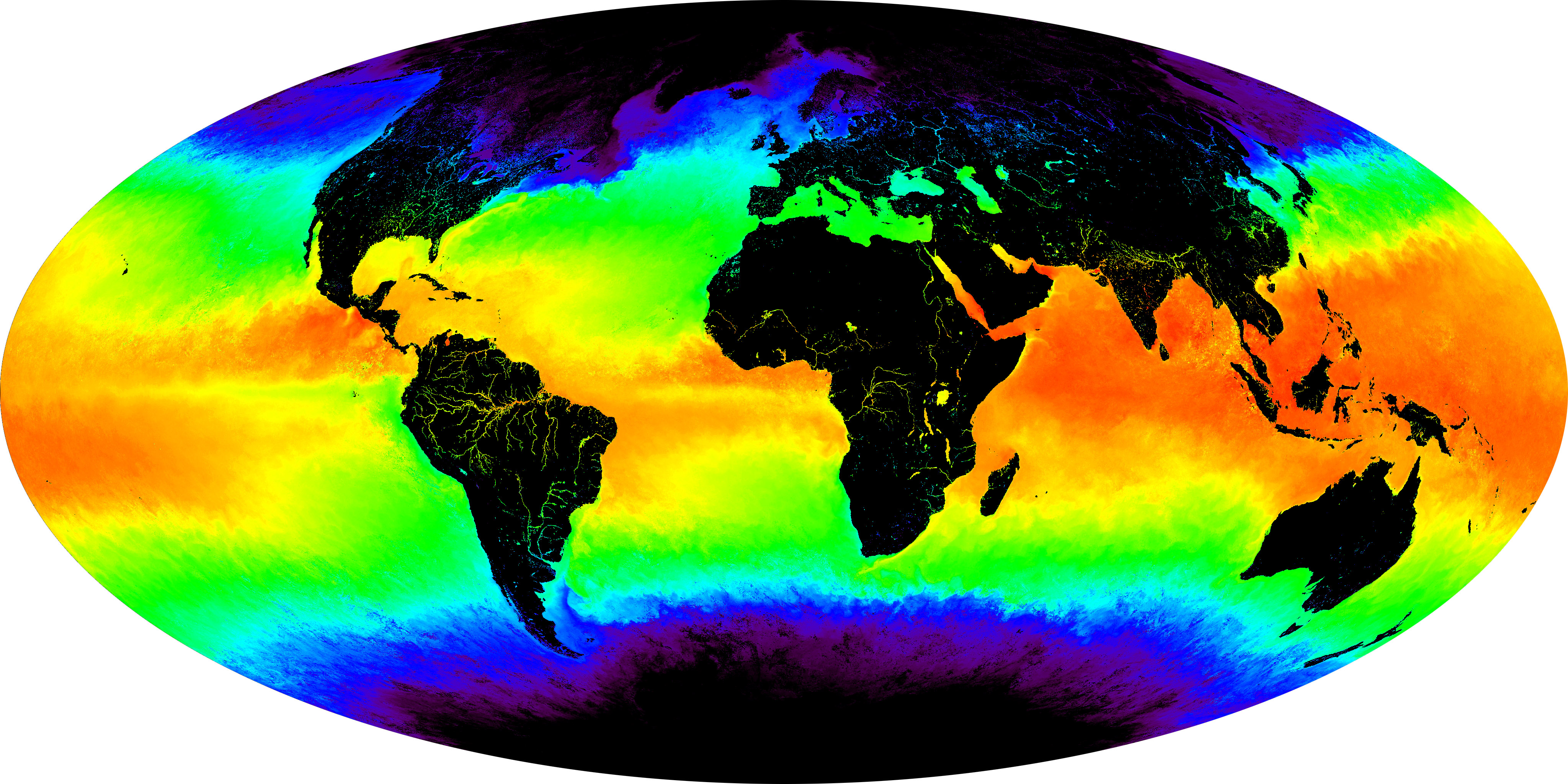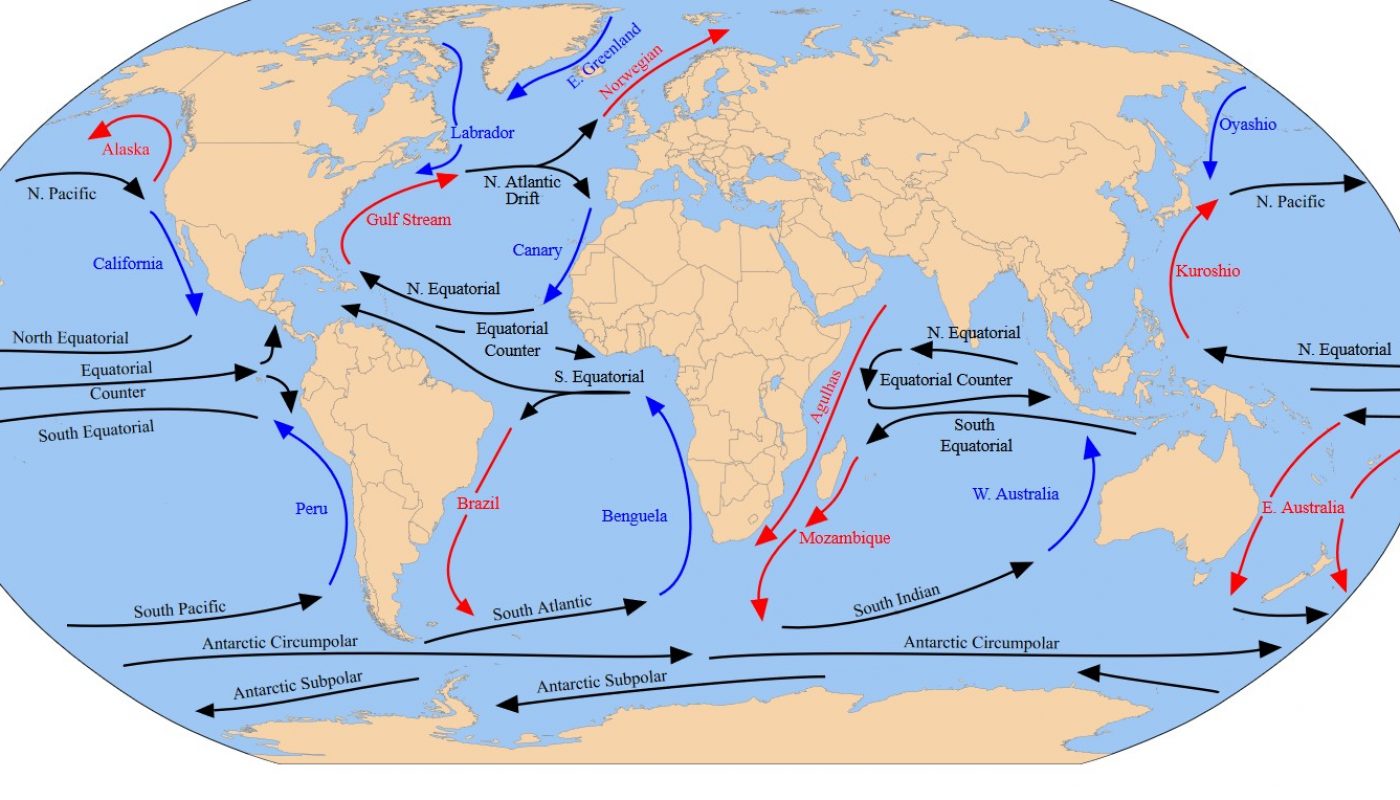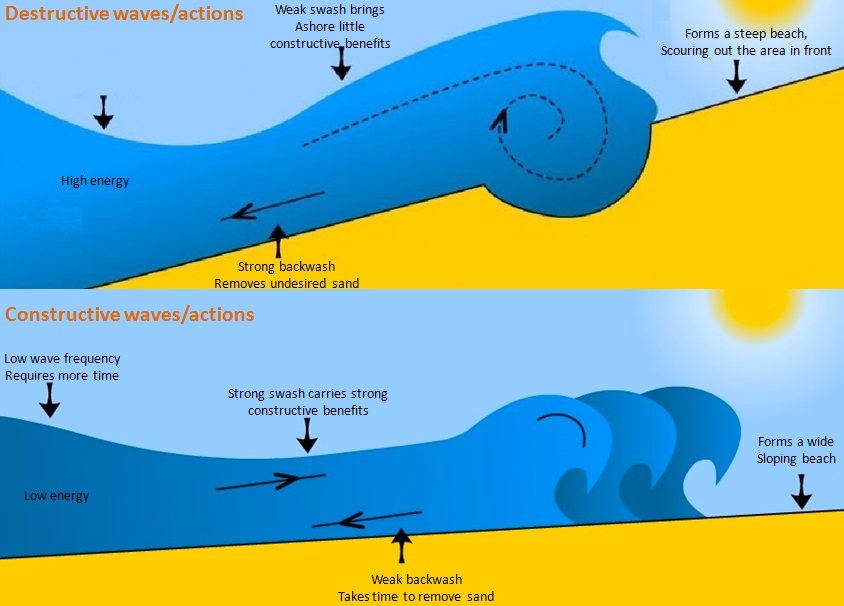
EARTH AS A WATER WORLD
Earth is the only planet in the solar system that has large volumes of surface water. Oceans cover 71% of Earth’s surface and contain 97.5% of all water found on Earth. Most water that falls as precipitation over land evaporates from ocean surfaces, hence the oceans, although salty, are also the main source of fresh water. Oceans absorb more solar energy than land and form a huge heat reservoir. This heat is transported around the world by ocean currents, affecting climate and local weather conditions.
WATER CYCLES
Oceans determine Earth’s climate but also have a direct influence on weather. It is water’s high heat capacity (the energy needed to raise water’s temperature by 1°C). that is particularly important. For the same amount of heat exchange, the temperature change in water is only one-fifth of the temperature change for a similar mass of sand. This means that oceans heat and cool much slower than land, creating daily and annual temperature cycles that cause sea breezes and monsoons.
Heat is stored mainly in the turbulent, shallow upper layer that lies above the cold, deeper ocean. These warm and cold ocean layers are separated by a zone of rapid temperature change. The mean temperature of the world ocean is only 3.8°C.
Oceans are also important for the balance of atmospheric gases. About one-third of the man-made carbon dioxide is absorbed and stored in the oceans. Since solubility of gases depends on both temperature and pressure, the gas accumulates in the deep, cold waters. If the ocean waters warm, the gas is released back into the atmosphere.

OCEAN CLIMATE
The oceans’ ability to store heat has a strong impact on world climate, and leads to difference between maritime and continental climates. Areas farther away from the ocean have bigger annual temperature ranges and drier climates than coastal regions. Sea surface temperatures, determined by ocean currents, lead to climatic differences along the same latitude.
Case-Study 1: The Strait of Gibraltar connects the Mediterranean Sea to the rest of the world’s oceans. Being adjacent to the Sahara Desert, the Mediterranean Sea receives a lot of solar energy and little rainfall. Its salinity is higher than average, mainly due to evaporation slovenska-lekaren.com.
Case-Study 2: The presence of the surrounding water mass greatly influences the climate of the Maltese Islands. The general weather is often cooler and more humid than what is experiences in inland areas of larger land masses at the same latitude. The high heat capacity of the sea also reduces large fluctuations in the temperature across the Maltese Islands. The presence of surrounding warm waters during the end of the summer season is a source of major weather instability when colder air migrates into the Central Mediterranean, thus creating areas with heavy thunderstorms and intense precipitation.
CURRENTS
An ocean current is a continuous, directed movement of sea water generated by a number of forces acting upon the water, including wind, waves, and temperature and salinity differences. Ocean currents flow for great distances, and together, create the thermohaline conveyor which plays a dominant role in determining the climate of many of the Earth’s regions. More specifically, ocean currents influence the temperature of the regions through which they travel. For example, warm currents travelling along more temperate coasts increase the temperature of the area by warming the sea breezes that blow over them. Perhaps the most striking example is the Gulf Stream, which makes northwest Europe more mild than other locations at the same latitude.

WAVES
Winds blowing across a stretch of sea or ocean produce waves. The frictional forces between the moving air and the water transfer wind energy to the water molecules, deforming the surface and creating waves. Depending on the speed of the wind, waves range from little ripples to rogues. The distance between one wave crest and the next is the wavelength. The functions of a wave are many. They create air bubbles which help oxygenate water. They also shape shorelines. Breaking waves release sea salt and other particles into the air. As the wave approaches shore, the water continues to arrive at the same speed and the wind remains constant. As a result, the wavelength shortens and the waves become steeper. Waves slow down as they travel over shallow water because friction along the seafloor acts like a brake. This friction slows the base of the wave. When the wave becomes too steep, the crest breaks over the base. The wave energy is released and the water carries sand, pebbles and other material back and forth. Waves can be divided into two separate groups; destructive and constructive. Destructive waves are created in storm conditions. They tend to erode the coast. Many sandy beaches tend to be at their narrowest in spring, after the previous winter’s destructive waves. On the other hand, constructive waves are created by fair weather. They break smoothly on the coast and deposit material, building up beaches. Sandy beaches tend to be at their widest at the start of autumn, after the previous summer’s more constructive waves. Another interesting feature of waves is the sea spray. These are droplets of water that blow in the wind after a wave breaks. Have you noticed how your cars and windows are covered in a white film? That is the salt left behind from sea spray. Sea spray can travel some many kilometres inland. As a result, nowhere in the Maltese Islands is far enough inland away from the influence of sea spray.



0 comments
Write a comment